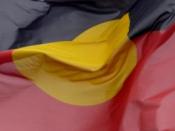Society & Culture
How do identity, the effects of discrimination and degrees of equality affect Aboriginal Australian's in Australian society?
It is well know that Aboriginals are discriminated against due to their identity and suffer from an absence of equality in the Australian society. The Macquarie dictionary states the meanings of identity as: the condition or fact of remaining or being the same one, discriminate as: to note as different, and equality as: the condition of being equal: the same in quality, degree, value, rank, ability, etc. The Federal Government defines an Aboriginal person as someone who:
÷Is of Aboriginal decent;
÷Identifies as an Aboriginal person; and
÷Is accepted as such by the Aboriginal community in which he or she lives.
The definition rejects the purely racial classification of the past and includes modern social and cultural factors.
There are clear differences between Aboriginal and non-Aboriginal Australians across all displays of value of life.
Aboriginals are identified as the most disadvantaged group in Australia. Aboriginals experience the lowest standards of health, education, employment and housing, and are over represented in the criminal justice system. The differences today between Aboriginal and non-Aboriginals is linked back to the White settlers and the White Australia policy. Consider the history of the treatment of Aboriginals. Children were taken from their parents, many Aboriginals were massacred and "round ups" of Aboriginals divided them from their land. Combined with exposure to European disease, the aboriginal population was decimated. This leads to conflict between Aboriginals and non-Aboriginal Australians.
Aboriginals became the minority group with a low social class in Australian society hence the attraction of racism, prejudice and discrimination. Aboriginal Australians make up approximately 2% of Australia's population.
Aboriginals are not even close in education compared to non-Aboriginal Australians. Only 32% of Aboriginal children complete schooling and only 1.3% of higher education students are aboriginals. School is a socialising agent and with Aboriginal children and adolescents not completing or attending school a barrier can form between them and the macro world. Poor educational results affect employment prospects, which then leads to a poorly paid job and lack of income, which reinforces negative self-image. If Aboriginals have a poor self image and are constantly facing racist remarks they will see no point in trying to achieve a high degree of education or employment therefore they will continue to have poor housing, creating a low social status and the poverty cycle will never end.
Aboriginal Australians do not receive equal opportunities when it comes to employment to non-Aboriginal Australians. In the 1996 census the unemployment rate for Aboriginals was 23% compared to that of 9% for non-Aboriginal Australians. In 1996, 14.9% of all Aboriginal employment was through participation in the Community Development Employment Projects (CDEP), which is a forbearer of the 'Work for the dole' scheme. The average weekly income for Aboriginal Australians is approximately $200 lower then the income of non-Aboriginals. With Aboriginals earning a significantly lower income inequality is foreseeable in Australian society. Aboriginal families would have more difficulties sustaining housing and providing adequate food. Adolescents have to leave school earlier to help their parents provide for the rest of their family causing unequal opportunities in their education compared to a non-Aboriginal adolescents who can afford to live comfortably and regularly attend schooling.
31% of Aboriginal families own their own homes compared to 71% of all Australian families. Aboriginal families often have 10 or more occupants living at one residence. With the family as a socialising agent, having a large family is an advantage, but this can also be a disadvantage for Aboriginals, as the more family members require a greater income and with Aboriginals getting paid $200 less compared to non-aboriginal families as mentioned before, this creates a substantial inequality.
Due to inequality in Australia Aboriginals do not receive equal health benefits to that of non-Aboriginal Australians. Life expectancy for Aboriginal people in the year 2000 was the same as it was for non-Aboriginal Australians in 1900. The Aboriginal death rate is 6 to 8 times higher today then that of non-Aboriginal people aged 35-54. Aboriginal infant mortality is 3 to 5 times higher than that for other Australian children and Aboriginal people are 12 times more likely to get an infectious disease.
Inequality can be seen in the Criminal justice system with the imprisonment rate for Aboriginal adults being 14 times higher than that of non-Aboriginal adults, with almost 19% of the adult prison population being identified as Aboriginal. A shocking statistic is that an Aboriginal adolescent was 21 times more likely to be obtained in custody than a non-Aboriginal adolescent. In 1998, the rate of imprisonment for Indigenous males aged 20-29 was 1 in 20 compared to 1 in 200 for non-Aboriginal males the same age. Racist attitudes within the police force class factors, which disadvantage aboriginals in the legal system and legislation such as mandatory sentencing all contribute to an Aboriginal persons chances of being imprisoned. It can be said that Aboriginals are often discriminated against due their identity and stereotypical ideas from the non-Aboriginal Australian society.
Article one of the Universal Declaration of Human Rights states that: All human beings are born free and equal in dignity and rights. They are endowed with reason and conscience and should act towards one another in a spirit of brotherhood. If Australian society treated Aboriginal people in such a way they would not face racism, discrimination and prejudice everyday. They would see equality in their lives. They would receive equal rights to the rest of the Australian society and would no longer live in poverty. They would have equal health, education, employment and housing and would not be over represented in the criminal justice system and they would not be identified as the most disadvantaged group in Australia.
In conclusion the effects of discrimination and degrees of equality affect Aboriginal Australians in the Australian society in a vast a ray of ways.
"Choose your friends by their character and your socks by their colour. Choosing your socks by their character makes no sense, and choosing your friends by their colour is unthinkable." Aboriginals do face inequality and discrimination everyday but If the Australian society joined in brotherhood and changed the way they think and accepted others for who they are and not judge them on their race, sexuality, gender, ability, health, social class, age or religion then equality would be received by all.



Cool
A few gammatical errors, but the facts interspersed throughout the essay help you to clearly illustrate your point. Nice job!
10 out of 10 people found this comment useful.